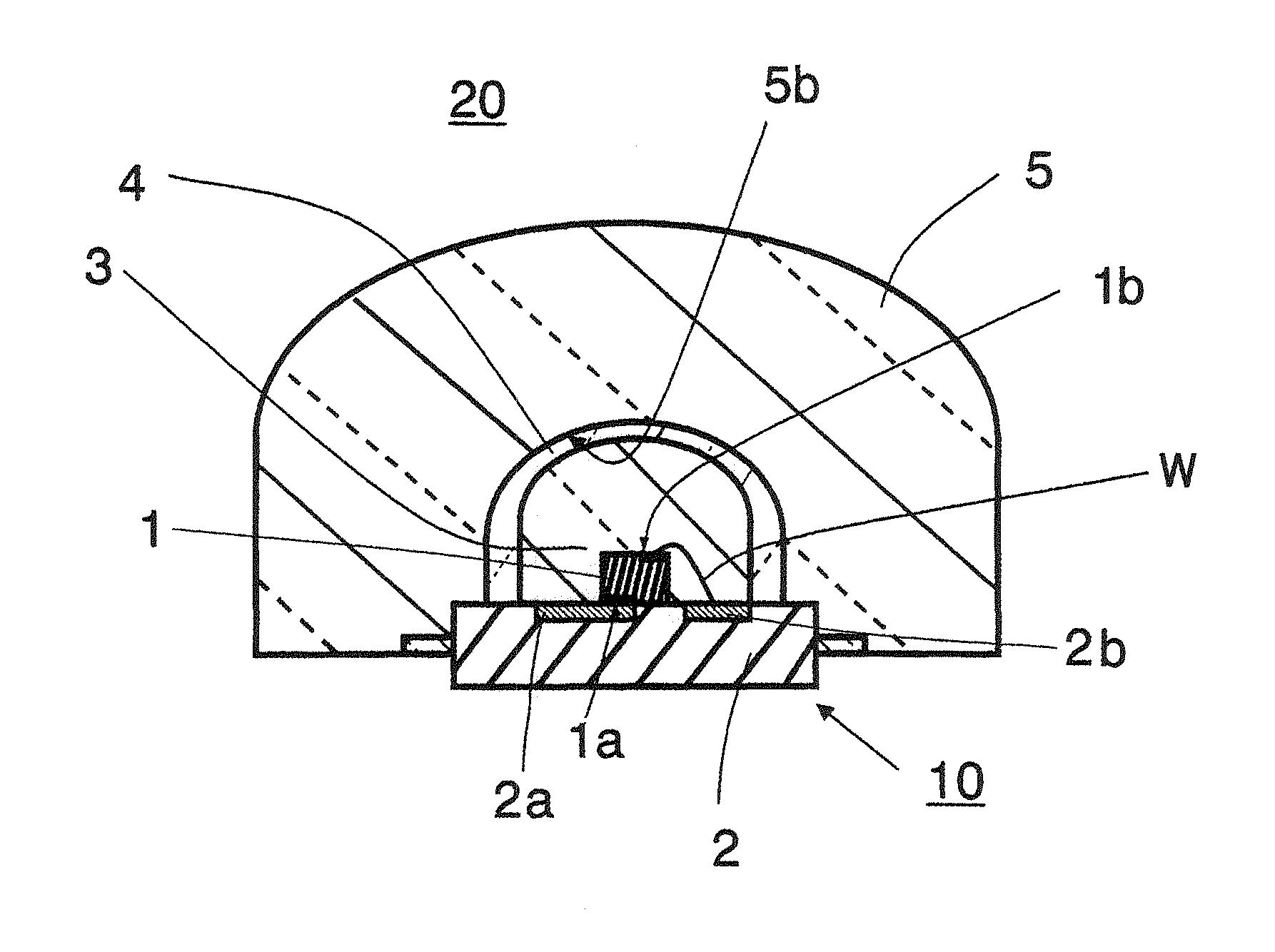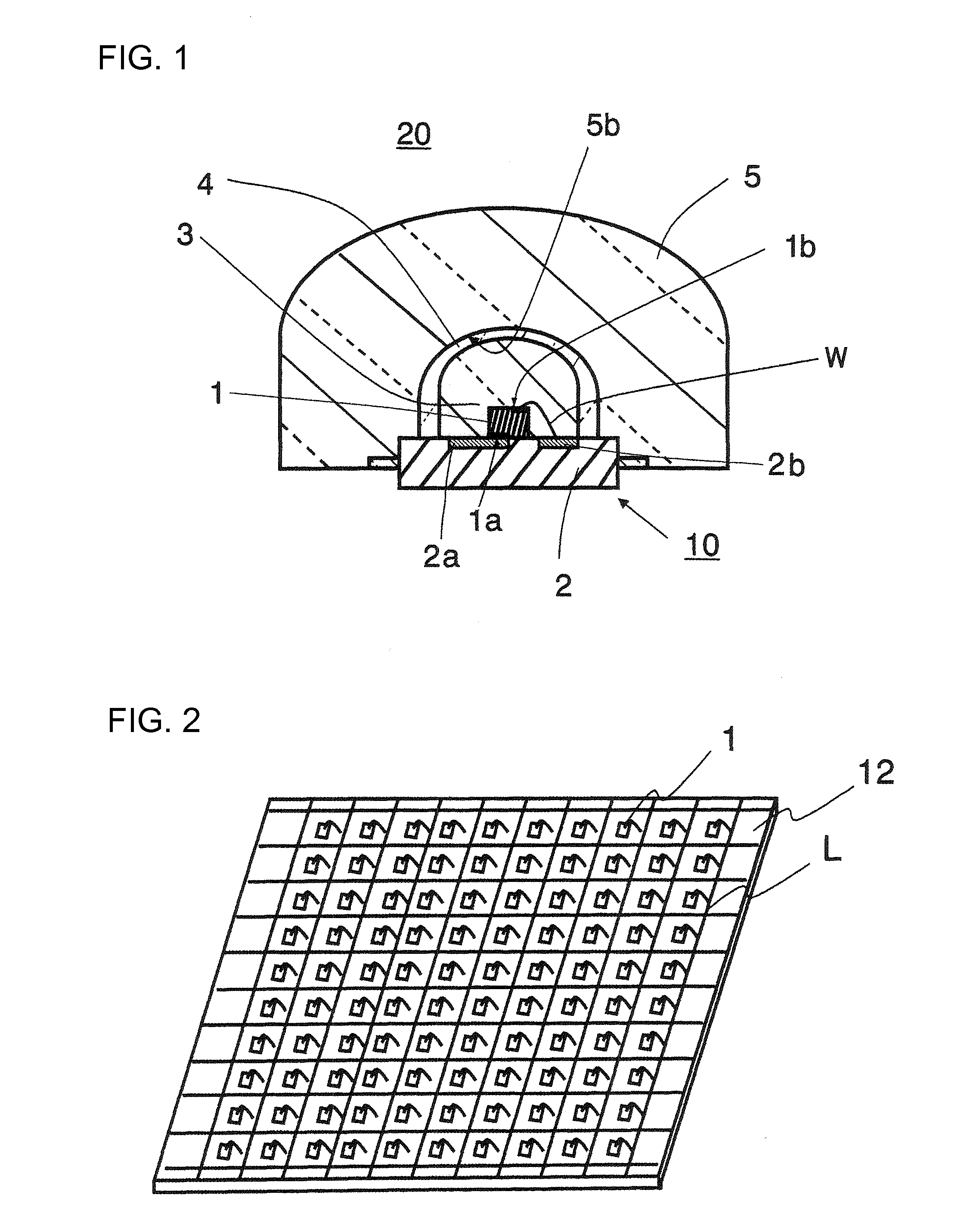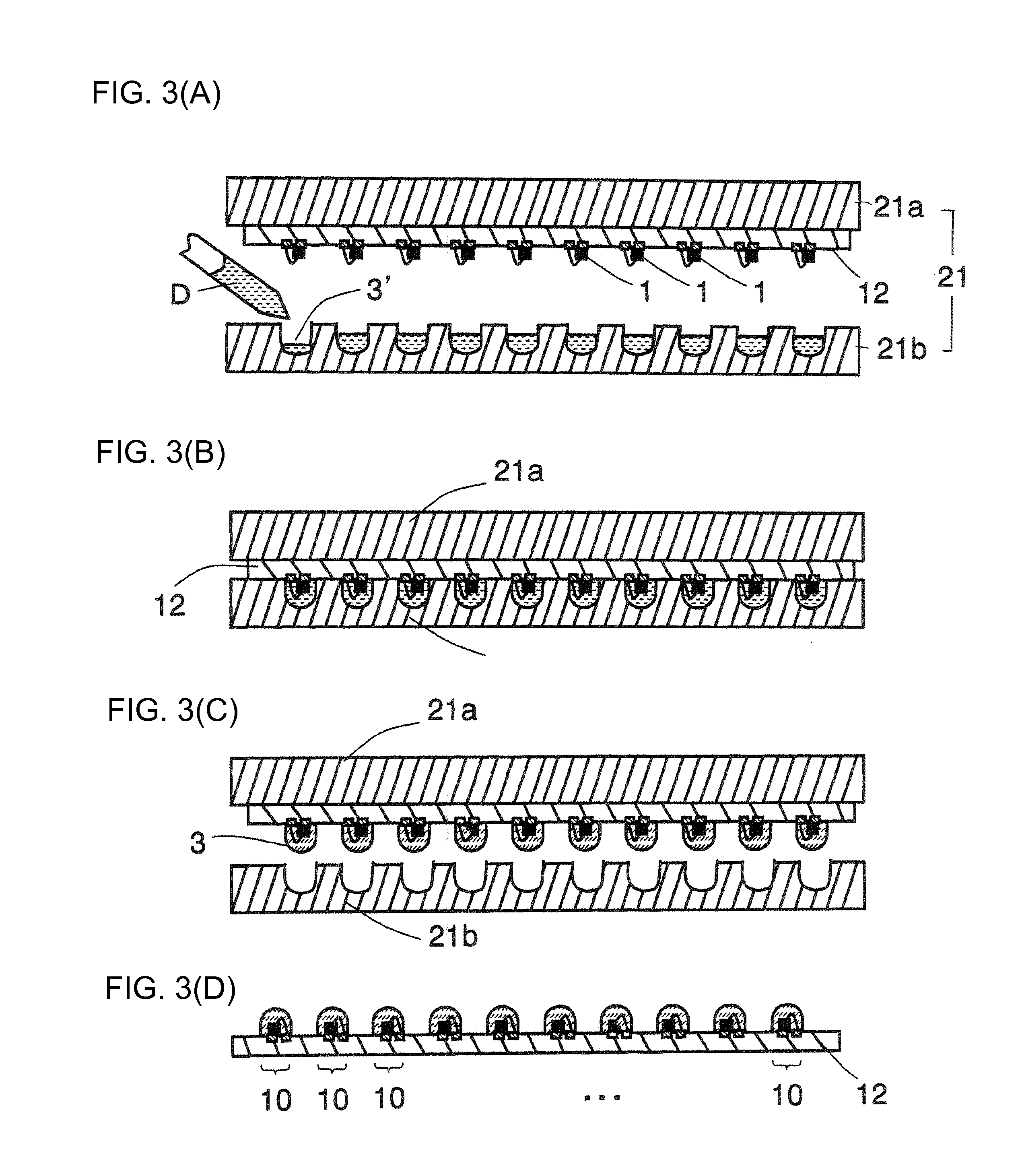Lens-equipped optical semiconductor device and method for manufacturing the same
a technology of optical semiconductor and resin lens, which is applied in the direction of semiconductor/solid-state device manufacturing, semiconductor devices, electrical devices, etc., can solve the problems of uneven positioning of transparent resin encapsulating bodies, inability to obtain light distribution characteristics as designed, and inability to achieve light distribution uniformity. , to achieve the effect of high accuracy
- Summary
- Abstract
- Description
- Claims
- Application Information
AI Technical Summary
Benefits of technology
Problems solved by technology
Method used
Image
Examples
example 1
[0096]As an uncured silicone elastomer A1, 0E-6636 (manufactured by Dow Corning Toray Co., Ltd.; JIS A hardness after curing of 90; refractive index of 1.54) was poured into a mold including a cavity, and heat-cured at 150° C., thus yielding a silicone lens X1, which is a batwing lens having a shape such as shown in FIG. 13. The silicone lens X1 includes a lens portion of a shape having a major axis of 10 mm and a height of 5 mm and including two hemispherical elevations, and the lens portion includes a recessed portion having a diameter of 5.4 mm, a height of 2.6 mm, and a capacity 0.04 cm3 at the center of the rear face. Also, a slight degree of tackiness without adhesiveness was perceived on the surface of the silicone lens X1.
[0097]Then, as an uncured silicone elastomer B1, 0.02 cm3 of TSE3221S (manufactured by Momentive Performance Materials Japan LLC.; JIS A hardness after curing of 30; refractive index of 1.41) was filled into the recessed portion of the silicone lens X1 usin...
example 2
[0104]A lens-equipped LED device B was obtained in the same manner as in Example 1 except that an overmolded LED device in which the center of the LED element and the center of the encapsulating body were offset by 100 μm was used as the overmolded LED device. FIG. 16 is a graph showing the light distribution characteristics of the above-described overmolded LED device, and FIG. 17 is a graph showing the light distribution characteristics of the obtained lens-equipped LED device B. As can be seen in the graph in FIG. 16, an asymmetrical peak indicating non-uniform emission at orthogonal coordinates was shown when the center of the LED element and the center of the encapsulating body were offset by 100 μm. However, as shown in the graph in FIG. 17, the lens-equipped LED device B including the silicone lens X1 showed batwing-like light distribution characteristics having symmetrical peaks indicating uniform emission at orthogonal coordinates, as in the case of the lens-equipped LED de...
example 3
[0105]A silicone lens X2 was formed in the same manner as in Example 1 except that an uncured hard silicone resin A2, SR7010 (manufactured by Dow Corning Toray Co., Ltd.; JIS D hardness after curing of 70; refractive index of 1.53) was used in place of the uncured silicone elastomer Al. Almost no tackiness was observed on the surface of the silicone lens X2. A lens-equipped LED device C was obtained in the same manner as in Example 1 except that the silicone lens X2 was used in place of the silicone lens X1. As a result of examining the light distribution characteristics of the obtained lens-equipped LED device C, the LED device C had batwing-like light distribution characteristics having symmetrical peaks indicating uniform emission at orthogonal coordinates, as in Example 1. Further, only a few voids were found as a result of examining the interface between the transparent resin layer and the transparent resin encapsulating body, and the bonding interface between the transparent r...
PUM
 Login to View More
Login to View More Abstract
Description
Claims
Application Information
 Login to View More
Login to View More - R&D
- Intellectual Property
- Life Sciences
- Materials
- Tech Scout
- Unparalleled Data Quality
- Higher Quality Content
- 60% Fewer Hallucinations
Browse by: Latest US Patents, China's latest patents, Technical Efficacy Thesaurus, Application Domain, Technology Topic, Popular Technical Reports.
© 2025 PatSnap. All rights reserved.Legal|Privacy policy|Modern Slavery Act Transparency Statement|Sitemap|About US| Contact US: help@patsnap.com



